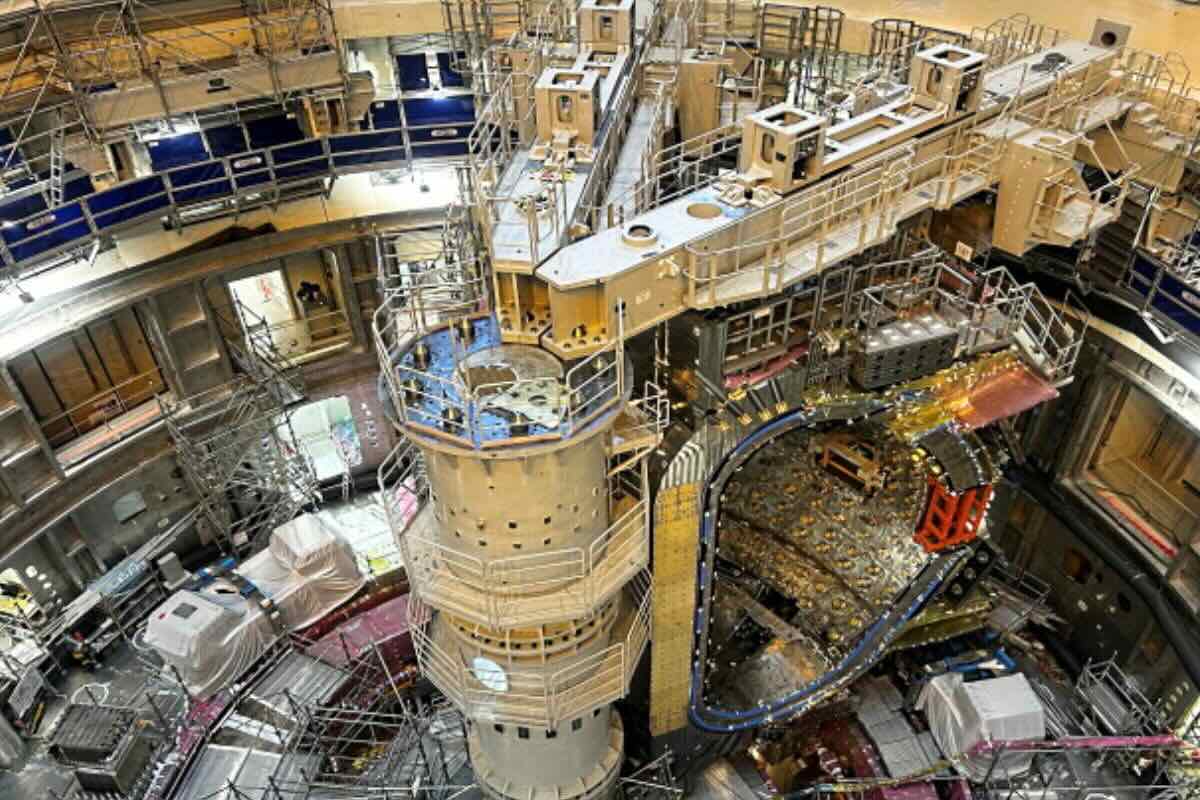The race to unlock the power of the stars has just taken a dramatic step forward. In southern France, the world’s largest fusion energy experiment has entered its most critical phase yet—and the eyes of the scientific world are watching closely.
Westinghouse Takes on ITER’s Most Complex Challenge
In August 2025, ITER, the international megaproject aiming to replicate the sun’s energy on Earth, began the final assembly of its reactor core. Westinghouse Electric Company, the American nuclear giant, was awarded a €168 million contract to lead the process.
The task is monumental. Engineers must weld together nine massive steel sectors, each weighing nearly 400 tons, to form ITER’s tokamak vacuum vessel. This donut-shaped chamber will one day hold hydrogen plasma heated to 150 million degrees Celsius—hotter than the core of the sun.
Westinghouse brings more than a decade of ITER experience to the table, working with Italian partners Ansaldo Nucleare and Walter Tosto as part of the AMW consortium. Precision is everything. A single misalignment could derail a project that has taken decades and billions of dollars to reach this point. As one ITER leader once put it, assembling the reactor is like “solving a three-dimensional puzzle on an industrial scale.”
A Global Project Unlike Any Other
ITER is more than a reactor—it’s a global collaboration that unites 35 nations, representing more than half of the world’s population and most of its economy. Each country contributes vital components: magnets from Japan, coils from Russia, cooling systems from the U.S., power supplies from China. All converge on Cadarache, in the south of France, where the pieces are slowly coming together.
The scale is unprecedented. Components are built across four continents, then shipped to Europe for assembly. The effort dwarfs even other massive scientific projects like the Large Hadron Collider, showing how cooperation on this scale could one day solve challenges far beyond energy.
For Europe, ITER has meant constructing the site and nearly half the components. For the U.S., it has been about supplying the central solenoid magnet—sometimes called the “beating heart” of the machine. Every contribution matters, and every piece must fit perfectly to achieve fusion.
The Dream: Turning Fusion Into Power
The ultimate goal is breathtaking: producing 500 megawatts of power with only 50 megawatts of input energy. That tenfold return would prove that fusion is no longer a dream, but a practical energy source for the future.
But the journey hasn’t been smooth. When ITER broke ground in 2010, scientists hoped for “first plasma” by 2018. That deadline has been delayed again and again, as the sheer complexity of the project revealed itself. The new target: conducting full fusion experiments by 2035.
This delay highlights the great challenge of fusion. For decades, the joke has been that fusion energy is “always 30 years away.” Still, ITER’s progress proves that patience is paying off. As one researcher put it, “If we can capture the energy of the stars, waiting a few decades is worth it.”
Beyond ITER: The Path to Limitless Energy
ITER itself won’t generate electricity for homes and cities. Instead, it’s a testbed—a proof of concept that will pave the way for the next generation of reactors known as DEMO. Those machines are designed to take what ITER learns and turn it into actual power on the grid.
Fusion’s advantages are enormous. Unlike traditional nuclear fission, it doesn’t create dangerous long-lived radioactive waste. There’s no risk of meltdown. Its fuel—hydrogen isotopes—is abundant, with enough in Earth’s oceans to power civilization for millions of years. If ITER succeeds, it could transform not just energy production, but the very future of our planet.
And ITER isn’t alone. Around the world, private companies and national labs are experimenting with alternative fusion designs, from stellarators to laser-driven reactors. ITER is the flagship, but it’s part of a broader wave that could make fusion reality sooner than expected.
A Milestone for Humanity
As Westinghouse welds the first pieces of ITER’s core together, it marks more than just engineering progress. It represents the best of what global cooperation can achieve. Nations that often compete elsewhere have joined forces to solve one of humanity’s greatest challenges: how to power our future without destroying our planet.
The journey is far from over, but with each sector welded, each coil installed, ITER is inching closer to its goal. And in doing so, it offers something more than energy—it offers hope.
Conclusion: Building the Future, One Piece at a Time
Fusion energy has long been called the “holy grail” of science. Now, for the first time, humanity is closer than ever to holding it in our grasp. The road may still stretch decades ahead, but milestones like this remind us that progress is real, and the future may burn brighter than we think.
